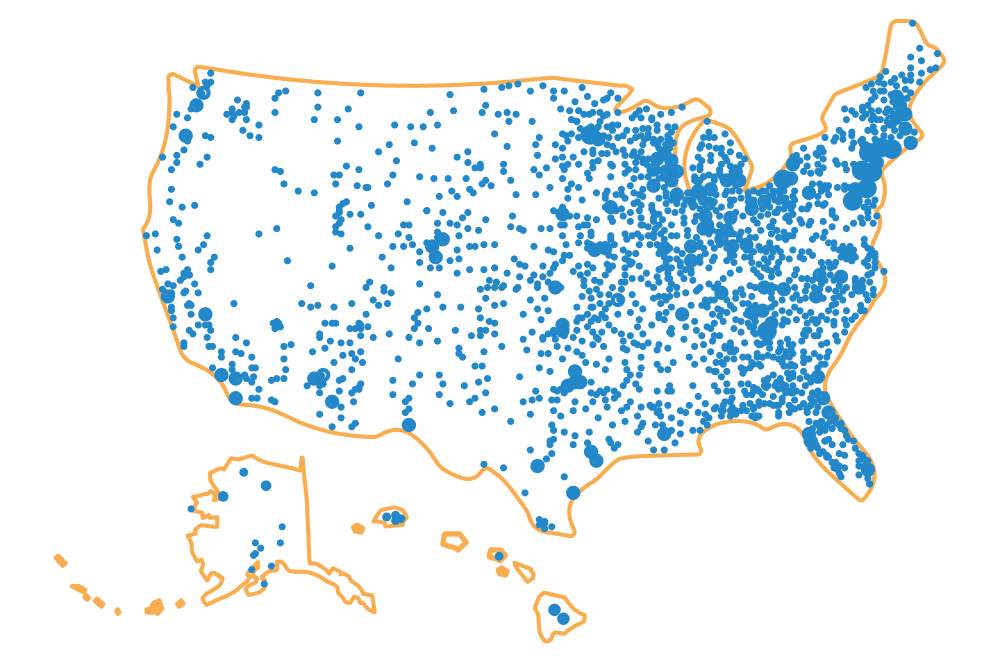With the amount of student loan debt still rising pared with the rise of AI, Generation Z — those students born between 1995 and 2010 —are looking at all options available for their higher education after high school, including trade and specialty schools, certificate programs, and community colleges in addition to traditional four-year universities and colleges.
Many in Generation Z are opting to attend schools specializing in career and technical education. This is reversing a decades-long trend toward a traditional four-year college education. Why are trade schools gaining in popularity? Students want to reduce their need for student loans, while securing a full-time position in industries that need new workers entering that field. Because of these schools’ close connections to professional trades, students opting to earn a technical education may graduate with a full-time, well-paying job already already lined up.
If you have been saving in Ohio 529 CollegeAdvantage for your child’s high education, never fear. 529 plans can be used for whatever comes after high school, which includes trade, technical and specialty schools, community colleges, certificate programs, four-year universities and colleges, graduate school, law school, and med school. So, if your child chooses to further their education by attending a trade school or certificate program, you can use your 529 account to pay for qualified costs there.
529 plans aren’t just for four-year programs
You can use the funds in your Ohio 529 Plan almost anywhere you are comfortable sending your child and your money. 529 plans can be used at any federally accredited educational institution, which is a post-secondary school that accepts federal financial aid. If you want to confirm that the schools your child is interested in attending — whether vocational, two-year, four-year or graduate — accepts federal aid, then do a search to see if the institutions have a Federal School Code on the Free Application for Federal Student Aid (FAFSA). If the schools do, then you can use your 529 funds there.
Qualified costs for apprenticeships — such as fees, textbooks, supplies, and equipment like required trade tools — can be paid with 529 distributions. The apprenticeship program must be registered with the Secretary of Labor’s National Apprenticeships Act in order to use a 529 plan withdrawal. Interested parties can check the U.S. Labor Department’s search tool to confirm that a program is eligible
In Ohio, there is a robust network of trade schools, under the Ohio Department of Higher Education (ODHE), known as Ohio Technical Centers (OTCs). According to the ODHE website, “OTCs provide post-secondary career and technical education (CTE) through 50 career centers across Ohio. These institutions offer programming in the skill trades (i.e., HVAC, phlebotomy, police training, EMT, etc.) that prepare learners for certificates, industry-recognized certifications, and state licensures. Many of the OTCs are positioned to respond quickly to the needs of business and industry by providing customize trainings and business consultation services to companies in order to assist with meeting Ohio’s workforce goals.”
Besides trade or specialty schools, community colleges can also be an excellent choice to continue an education after high school. Usually lower in cost than a four-year program, your child can take required core classes that, in many cases, will transfer to other schools, or explore different courses in their search for their dream profession. Your student can earn an associate degree or use the community college as a stepping stone to a traditional four-year university. Either way, a 529 plan can cover qualified high education expenses required to attend these schools.
Ohio’s 529 Plan can be used nationwide
While you may have saved in Ohio 529, you can use your funds at both Ohio schools and schools nationwide. 529 plans can be used across the United States at any accredited post-secondary school that accepts federal financial aid.
529 plans withdrawals are tax free
One of the great advantages in saving in a 529 plan is withdrawals are tax free when used for qualified higher education expenses like tuition; room and board when a beneficiary is enrolled for at least half of the full-time academic workload; mandatory fees; computer equipment and related technology as well as internet services; books, supplies and equipment related to enrollment and class schedule; and certain expenses for a special-needs student. Room and board costs can also include rent for off-campus residency and groceries (non-taxable items), provided these costs are equal or less than the same room and board allowances from the accredited education institution. The list also includes qualified costs at certificate and credential programs.
Higher education takes many forms. While there are many educational paths for your children, one thing is certain: Ohio's tax-free 529 Plan is the simple way to help. Your savings grow tax-free and stay tax-free when used for qualified higher education expenses. And Ohio's 529 Plan can be used at thousands of schools, nationwide.
No matter what kind of higher education your children choose, Ohio 529 make its simple to start saving for it. An Ohio 529 account can be used for whatever comes after high school, including four-year universities, community colleges, trade, technical, or vocational schools, certificate programs and apprenticeships. Learn, plan and start today at CollegeAdvantage.com.
This article was originally posted in June 2020 and has been updated to reflect new information for 2025.








